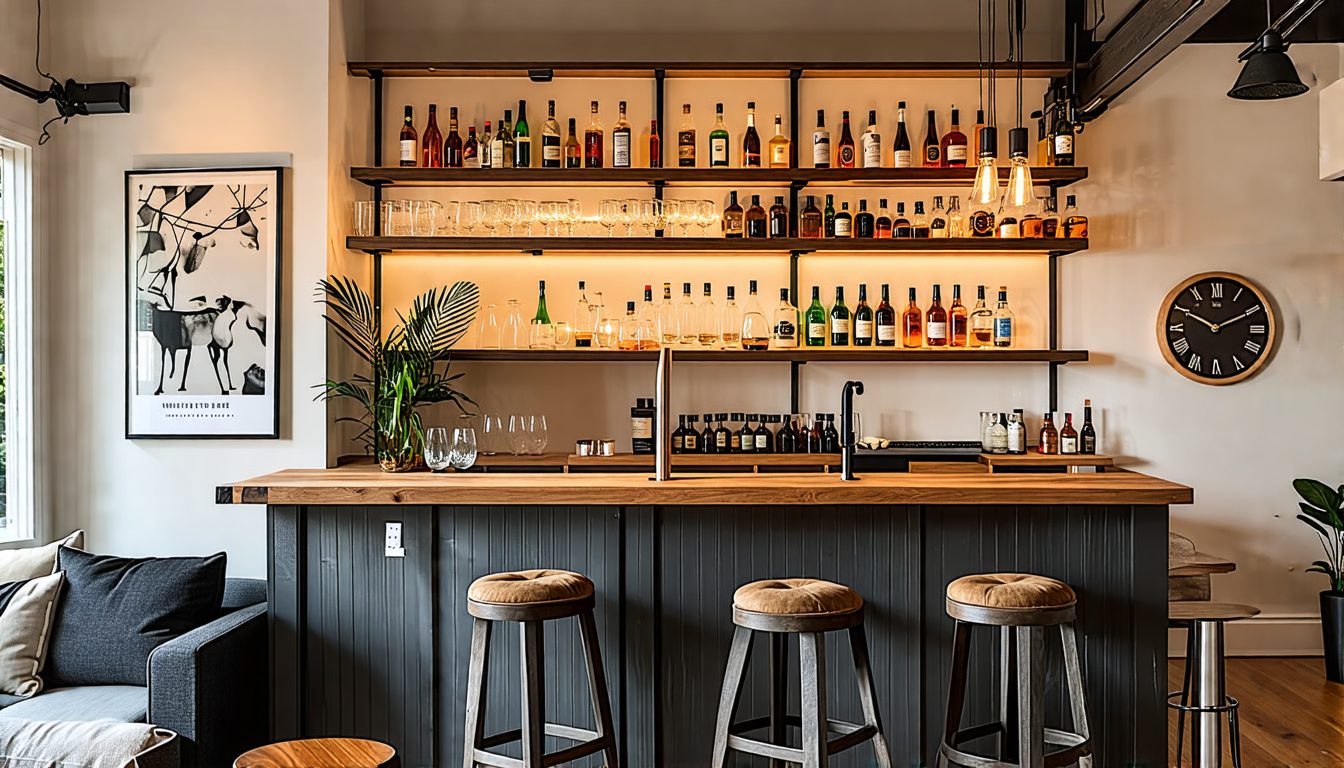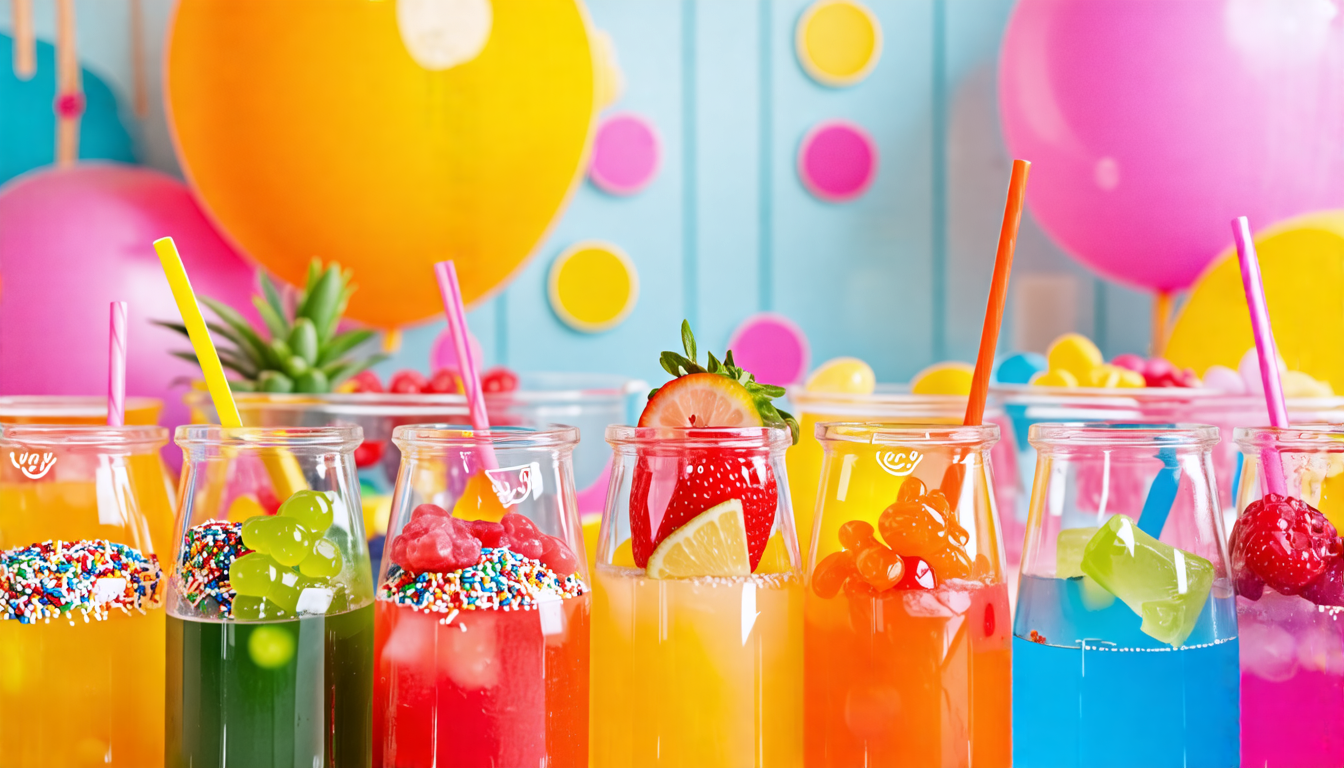Are you looking for innovative ways to keep your children and teens engaged, creative, and learning at home? DIY bars offer an exciting solution. These customized spaces encourage young minds to delve into hands-on projects, providing a productive outlet for their boundless energy and creativity. By carefully selecting age-appropriate activities and using non-toxic, child-friendly materials, parents can ensure that every DIY endeavor is both safe and educational. Furthermore, designing a functional and attractive DIY bar space can enhance the overall experience. Organize tools and materials for easy access and cleanup, and choose vibrant themes that capture the imagination. This adaptation of DIY bars for children and teens not only fosters creativity but also helps develop practical skills and confidence, making it a win-win for both kids and parents. Dive in to explore how you can create the perfect DIY environment for your young innovators.
Creating Safe and Engaging DIY Projects for Kids and Teens
Selecting Age-Appropriate Activities that Foster Creativity and Learning
When planning DIY projects for children and teens, it’s essential to choose activities that suit their developmental stages. Younger children, for instance, will benefit from simple, guided tasks that enhance basic motor skills, such as assembling small picture frames or creating colorful bead bracelets. These activities not only amuse but also help enhance their hand-eye coordination and fine motor skills.
For teens, consider more complex projects that encourage problem-solving and creativity. Think about building small furniture items like a bedside table or a storage box. These projects require measuring, cutting, and assembling, providing teens with a sense of accomplishment and a deeper understanding of craftsmanship. Additionally, DIY projects such as customizing their room decor or creating personalized wall art can engage their artistic talents and allow them to express individuality.
Integrating educational elements into these projects can also make them more enriching. Activities like constructing a birdhouse can incorporate lessons on wildlife and environmental conservation, while creating a science-project model could enhance understanding in subjects like geometry and physics. The key is to strike a balance between fun and educational value, ensuring that the projects are both enjoyable and informative.
Ensuring Safety with Non-Toxic and Child-Friendly Materials
Safety should always be the top priority when crafting DIY projects for kids and teens. Selecting non-toxic, child-friendly materials is crucial in creating a secure crafting environment. For younger children, use materials specifically designed for their age group. Non-toxic adhesives, washable paints, and softwood like pine are excellent choices. These materials minimize the risk of harmful exposure and make for easier cleanup.
Teens can handle a broader range of materials, but it is important to ensure those materials are still safe and manageable. For instance, if a project requires using tools like saws or drills, supervision and proper instruction are paramount. Providing them with safety gear such as goggles and gloves can prevent injuries and promote a culture of safety.
Additionally, organizing the workspace to prevent accidents is vital. Ensure that all tools and materials are stored properly when not in use. Sharp tools should have protective covers, and heavy items should be securely placed to avoid falling hazards. Encouraging kids and teens to clean their workspace regularly can instill good habits and reduce the chance of accidents.
Furthermore, take into consideration any potential allergens. For example, some children may be allergic to certain types of wood or chemicals in paints and adhesives. Always read product labels carefully and consider conducting a patch test if there’s any doubt. If allergies or sensitivities are a concern, opt for hypoallergenic alternatives.
By prioritizing age-appropriate activities and ensuring the use of safe materials, you can create DIY projects that are not only engaging but also secure for children and teens. This approach fosters a love for crafting while emphasizing lifelong skills and safety awareness.

Designing a Functional and Attractive DIY Bar Space
One of the key aspects of making a DIY bar appealing to children and teens is to focus on its functionality and aesthetics. Creating a space that is both useful and visually captivating can significantly enhance their engagement and enjoyment. Here’s how you can design a functional and attractive DIY bar space:
Organizing Tools and Materials for Easy Access and Cleanup
Efficient organization is crucial for maintaining a DIY bar that kids and teens will utilize frequently. Below are some strategies to keep tools and materials orderly:
1. Use Clear Storage Containers
Transparent bins and jars enable children to see the contents easily. Labeling these containers with both words and pictures can further simplify the process, especially for younger kids. This not only saves time but also reduces frustration when searching for specific items.
2. Allocate Specific Zones
Designate particular zones for different activities. For instance, you could have a painting section, a woodworking area, or a spot specifically for crafting. This zoning helps prevent clutter and ensures that each activity has the necessary space and resources readily available.
3. Install Shelving and Pegboards
Shelves and pegboards provide vertical storage solutions, making the most out of the available space. Pegboards are particularly handy for hanging tools like scissors, rulers, and brushes, keeping them visible and within reach.
4. Create a Cleanup Routine
Encouraging kids to clean up after their activities can be facilitated by having a straightforward system in place. Easy-to-reach trash bins, dedicated places for used materials, and clear instructions on where to return items can make the process seamless and habitual.
Utilizing Vibrant Designs and Themes to Capture Children’s Interest
Children and teens are naturally drawn to colorful and dynamic environments. Infusing your DIY bar with vibrant designs and themes can significantly enhance their experience and enthusiasm for engaging with various projects. Here are some ideas to consider:
1. Bold Color Palette
Use bright, eye-catching colors for the walls, furniture, and storage units. Colors like red, blue, yellow, and green can make the space inviting and lively. Feature walls with large stenciled patterns or murals can add an extra layer of interest and creativity.
2. Thematic Inspiration
Incorporate themes that resonate with children’s interests, such as nature, space, or favorite fictional characters. This thematic approach can be reflected in decorations, the color scheme, and even the types of projects available at the DIY bar. For instance, a space-themed bar could feature starry wall decals and provide materials for building model rockets or constellations.
3. Interactive Elements
Add interactive elements that invite tactile and visual engagement. Chalkboard walls or whiteboard surfaces offer kids a place to draw, write, and plan their projects. Magnetic boards can hold tools and supplies, while pegboards invite children to arrange their materials creatively.
4. Customizable Workstations
Provide adjustable-height tables and chairs to accommodate children of different ages and sizes. Customizable workstations not only make the DIY bar more comfortable but also ensure it is practical for various activities. If possible, include modular furniture pieces that can be reconfigured to suit different projects and activities.
5. Personalized Spaces
Allowing kids to personalize their workspaces can foster a sense of ownership and pride. Whether it’s through name tags, individual storage bins, or their own artwork displayed around the space, personalization helps kids feel more connected to their DIY bar.
In summary, by organizing tools and materials for easy access and using vibrant designs and themes, you can create a DIY bar space that is both functional and attractive. A well-organized and colorful environment not only facilitates creativity but also encourages children and teens to engage consistently in various DIY activities.
By adapting DIY bar projects specifically for children and teens, parents and caregivers can provide a creative and educational experience that is both safe and engaging. Selecting activities that match the age and interests of the participants helps to spark imagination and enthusiasm, while prioritizing the use of non-toxic, child-friendly materials ensures their safety. Designing the DIY bar space with organization in mind makes the entire process more efficient and enjoyable, allowing kids and teens to focus on their projects without unnecessary distractions. Incorporating vibrant designs and interesting themes can further captivate young minds, transforming a simple DIY project into an exciting adventure. By following these guidelines, you can foster a fun and productive environment that encourages creativity and skill-building in children and teens.

